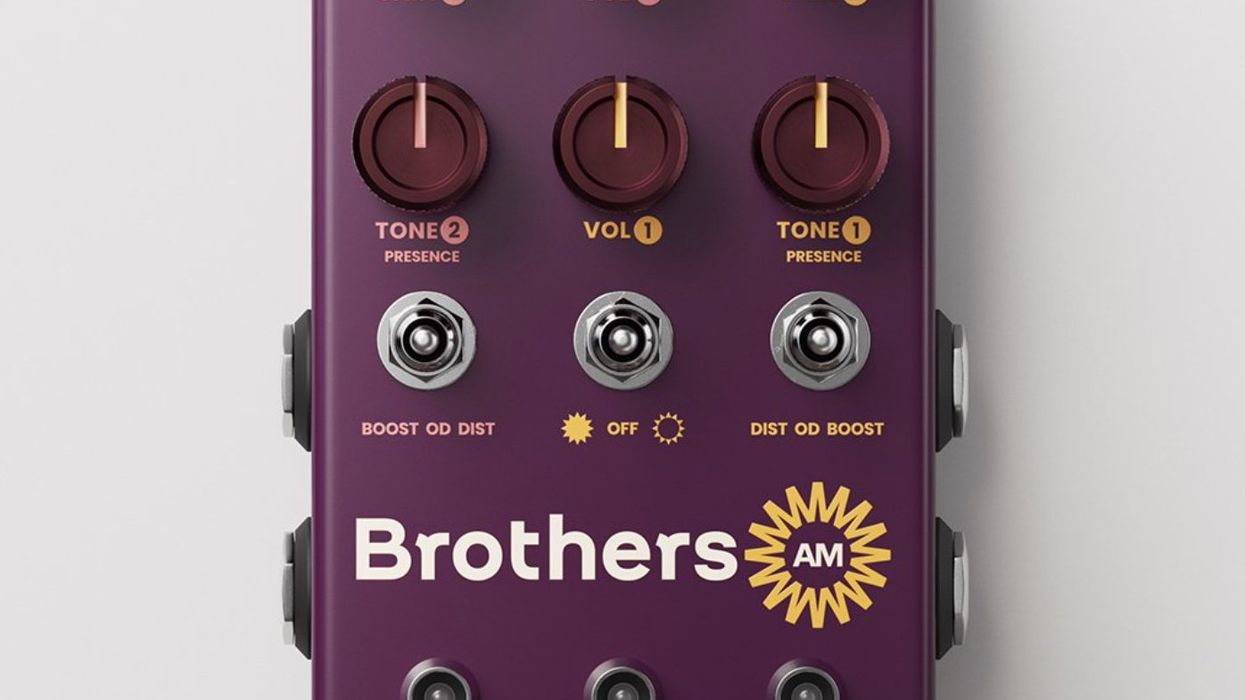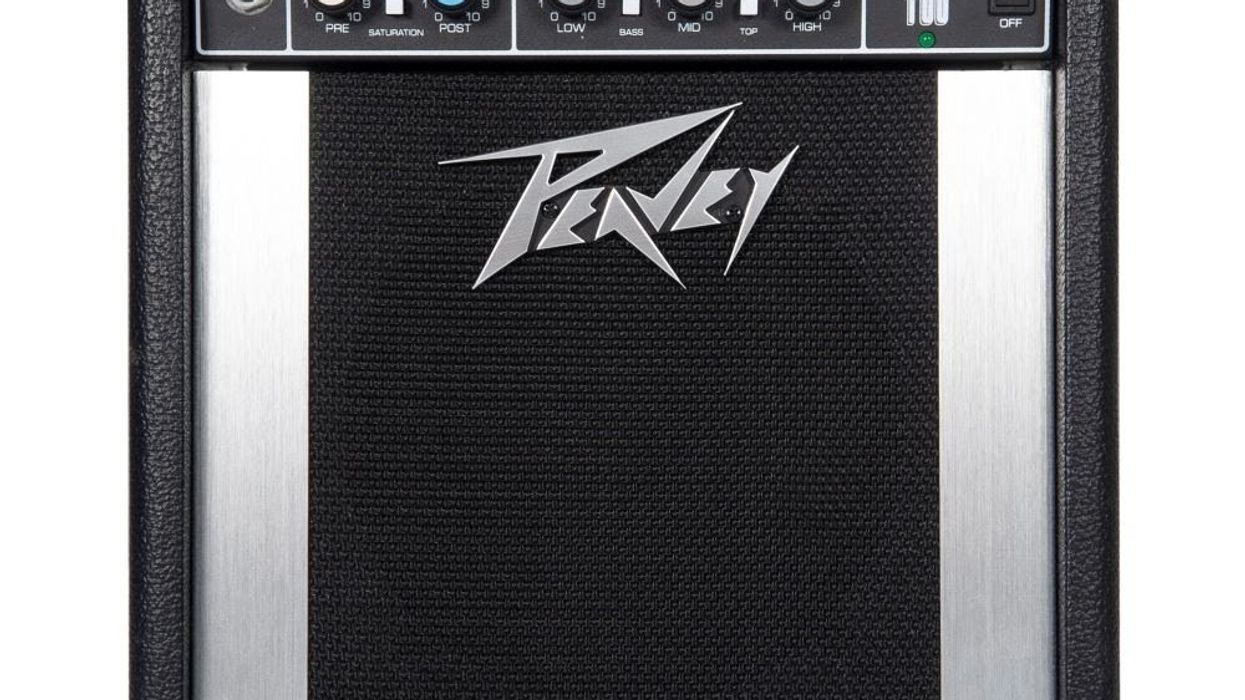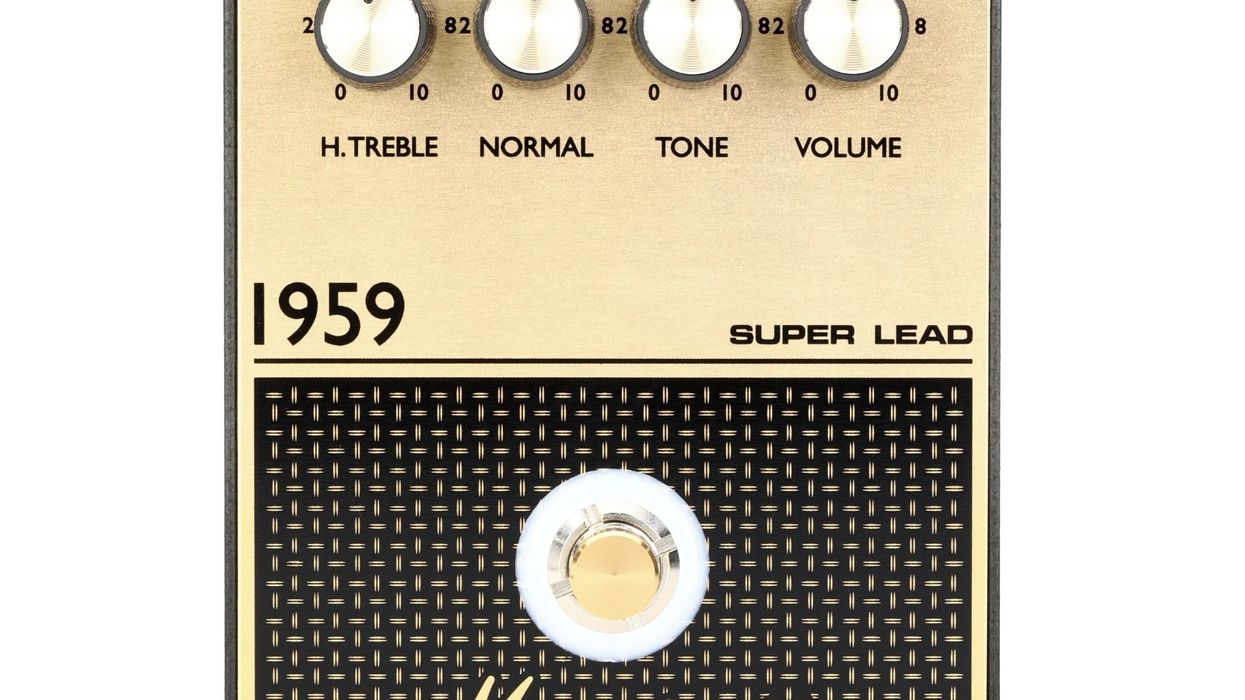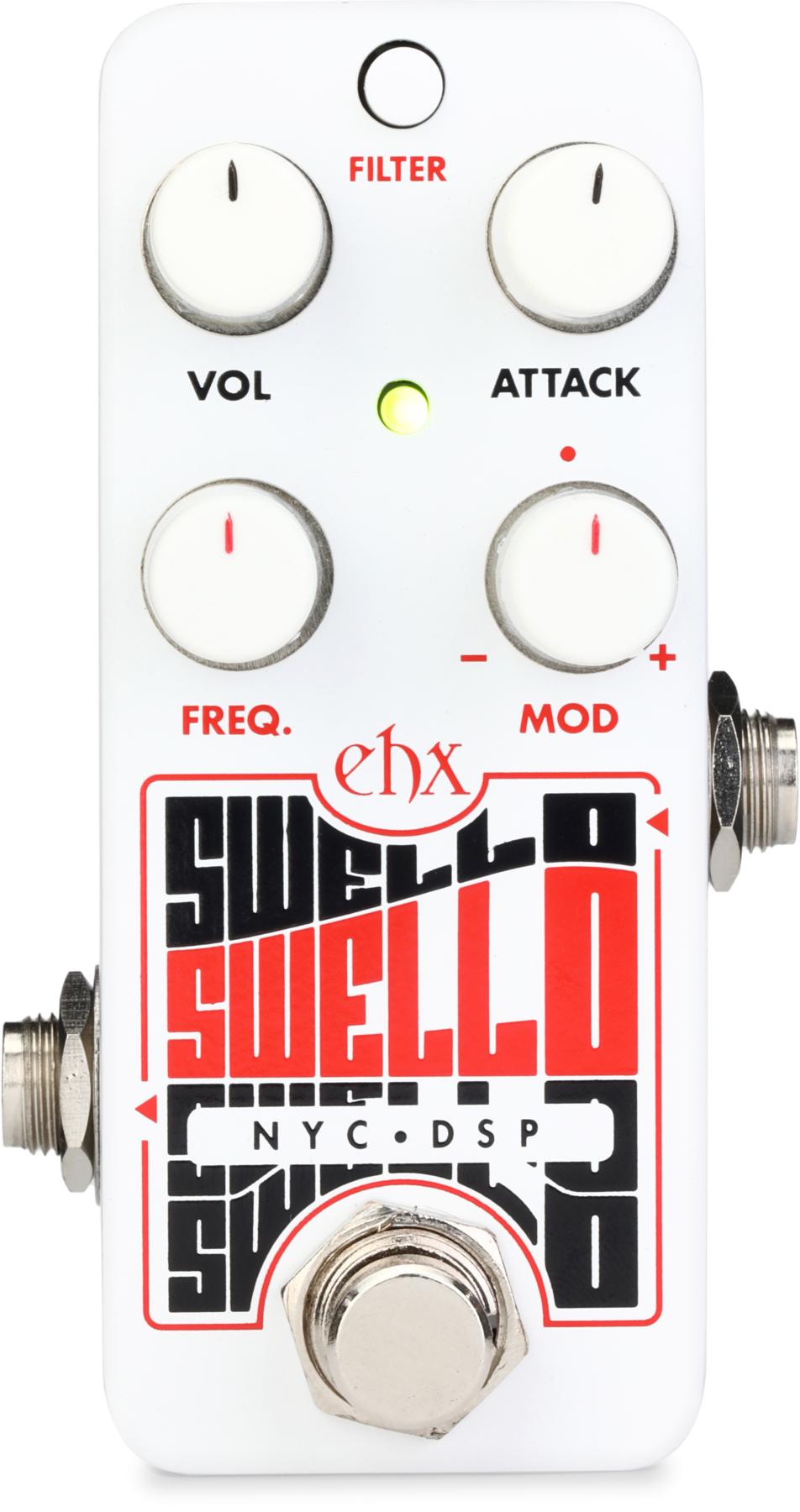A lot of old-school guitarists will turn tail and run at the sight of a multi-effects unit. But multi-effect fear isn’t altogether irrational, because, let’s face it, a lot of multi-effect pedals and rack units are bears to work with, especially when time is short and you just want to plug in and play.
With the new ME-80, however, Boss clearly prioritized ease of use, and this surprisingly utilitarian, powerful, and portable unit is relatively simple to operate, a lot of fun, and great for home demo studios, small, informal gigs, and even unorthodox tinkerers who like the straightest possible line to the most possible sounds.
Tough, Easy to Toss Around
The ME-80 is built for moving from place to place fast, and while it’s not super-light, it’s sturdy as hell, with an almost entirely metal enclosure and chassis. Apart from the knobs and switches, there’s very little plastic.
You can also power the ME-80 with six AA batteries, which means you can pick it up and move from room to room, or go from jamming through headphones in the kitchen to blasting through your amp—all with the uncomplicated glee of a kid toting around his battery-powered keyboard. If you’re a busker, play pub gigs, or perform at the farmer’s market, this kind of portability can be invaluable.
The addition of USB connectivity maximizes the creative potential of the ME-80 too. Once you’ve downloaded the ME-80 software, you can literally be writing a riff with the device in the backyard and capture the same sounds on your DAW up in your office a few minutes later.
Obviously, the ME-80 isn’t the first multi-effect unit or modeler to deliver portability and connectivity. Devices like Line 6’s POD and Boss’ own GT-100 have similar capabilities, and the ranks of tablet- and smartphone-based guitar interfaces seem to grow daily. But the ME-80 offers an interface that’s much more familiar and intuitive to the typical stompbox user, and arguably, a whole lot more fun to play with than other devices.
For starters, the ME-80’s interface is basically a little hive of stompboxes. Each of the four footswitches closest to the guitarist is a bypass switch dedicated to one of four effects groups: compression and FX1 (which includes a ring modulator and acoustic simulator among others), overdrive and distortion, modulation, and delay (which also includes a looper). Three footswitches above and to the left of the four main effect switches activate a preamp simulation section, an EQ/FX2 section (which also includes a second phaser, delay, and looper), and a reverb control.
Each effects group has a dedicated set of knobs, including one that selects a specific amp or effect type. To the right of the footswitches, there’s an expression pedal for operating pedal effects (wah, talk box, Whammy-style octave up and down functions, and more). You can also use the pedal as an expression pedal to control modulation rates and delay level.
The two leftmost pedals in the top row also let you select presets when in “memory” mode, which is activated by the upper right switch. There’s a raft of cool factory presets. But creating your own is a straightforward, three-step process.
Sound Horizons
The sounds inside the ME-80 range from really good to passable, depending on the effect or amp. Some voices, sounds, and effects—the “tweed” amp, the delays, and the tremolo effect—have a warm, organic quality and relatively natural dynamic response. Others—heavy phase settings, the ring mod, and most of the heavy distortions—more readily betray their digital roots.
The effects typically put function before freak-out potential: There’s few deep, ambient space verbs and fractured delay sounds to be found here. Still, with a bit of tinkering and an adventurous spirit you can create a lot of unusual, recording-worthy textures, and the right pairings can make the ME-80 sound very lush.
Ratings
Pros:
Super portable. Tons of sounds. Easy to use. Nice sounding delays and modulation effects.
Cons:
Some effects and high-gain distortions have a digital edge.
Tones:
Ease of Use:
Build/Design:
Value:
Street:
$299
Company
BossUS.com
Mating the rotary effect and the spacious and spacey “tera echo” delay along with a sustain-heavy compressor and a Vox-like combo-amp simulation generates an expansive, swirling, sci-fi/psychedelic tapestry. The “harmonist” (which can be set for thirds, fourths, fifths, sixths or an octave above and below) and a little boost and tape echo will make you sound like Duane and Dickey without the expense and hassle of a second guitarist.
There are some peculiarities to get used to on the ME-80. For one thing, you have to keep effect levels for modulation and delay effects uniform with OD and comp effects if you’re using more than one effect. For example, if you’re about to launch into the Uni-Vibe segment of raging Hendrix solo and the “uni-v” effect level is too low, you’ll experience a highly anti-climatic signal cut for the whole effects chain rather than for just the selected effect level. This type of signal cut might makes sense when you’re trying to keep a hot fuzz in check, but it makes less sense for other effects. The workaround is to create a preset. But if you prefer to play without them you have to be careful about effect balance.
The Verdict
The features covered here represent just a fraction of what the ME-80 can do. And while the ME-80 is not without limitations (most often these are fair tradeoffs for simplicity), it’s a smart, streamlined way of getting a lot of sounds for very little dough.
Some sounds, like the delays, combo, and tweed amp voices are a real pleasure to use and have a relatively organic feel. Others—most notably the high-gain distortions—exhibit a more digital edge and lack the touch and reactivity of the genuine article. The unit definitely sounds best when paired with a tube amp with a neutral EQ setting. But cleaner sounds are effective with a good PA when you use the internal speaker simulator and dial up a sweetening EQ that massages highs and mids.
The real magic of the ME-80 is it’s ability to deliver so many reasonably convincing sounds in a sturdy package you can power with a pack of AAs or DC adaptor. That means a wealth of possibilities for remote performance and production. If all you have is a set of headphones, you can practice anywhere. Hook the ME-80 up to a battery-powered amp and you can play for the rest of the world at any location—say, jams on a mountaintop—with all the functionality of a traditional, familiar pedalboard.
Taken together, the ME-80 is a set of smart design compromises in a multi-effect unit so affordable and easy to interact with that it rarely feels like any kind of compromise at all.
Watch the Review Demo:











![Rig Rundown: Russian Circles’ Mike Sullivan [2025]](https://www.premierguitar.com/media-library/youtube.jpg?id=62303631&width=1245&height=700&quality=70&coordinates=0%2C0%2C0%2C0)










